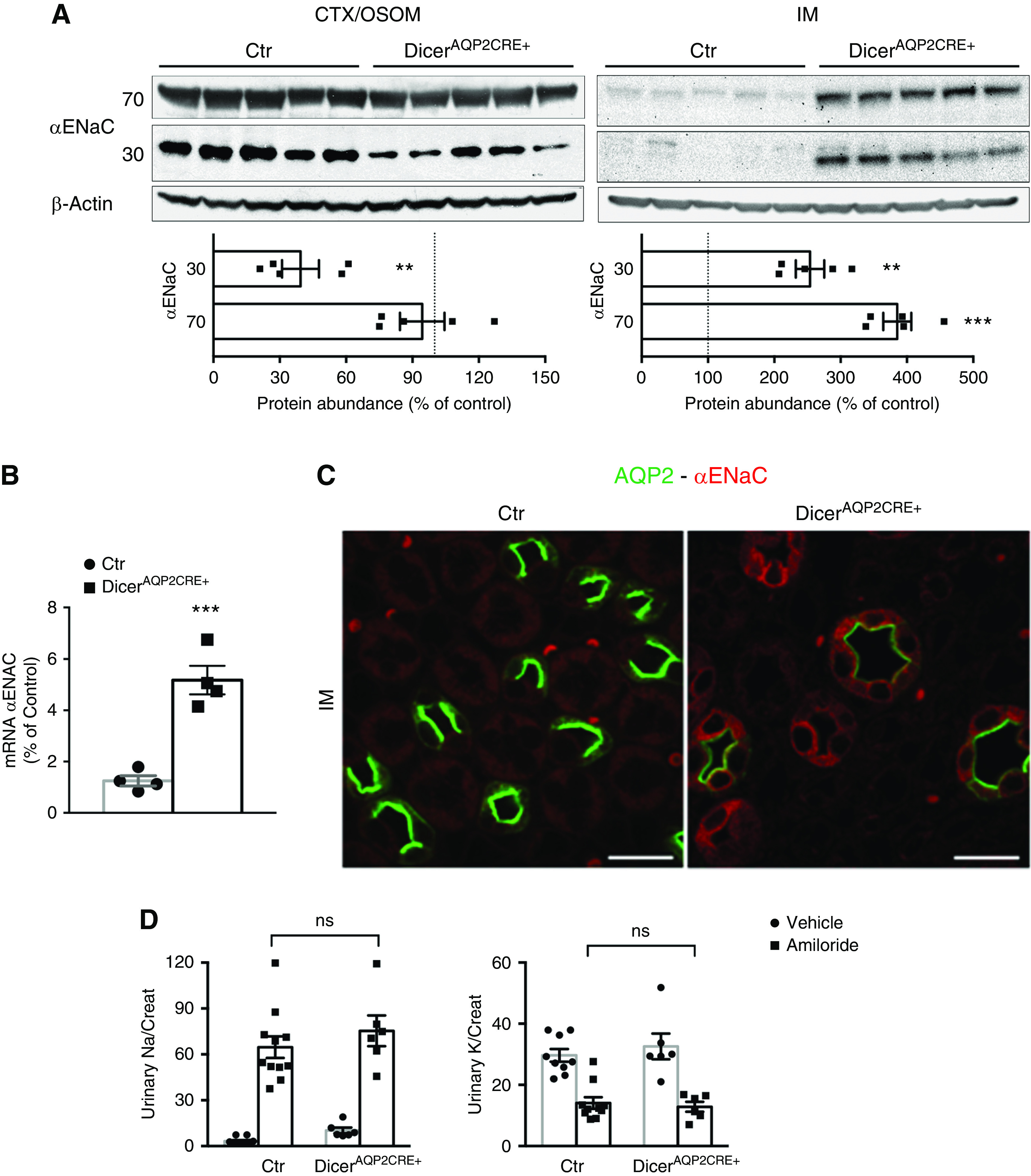Figure 3.

Amiloride-sensitive sodium reabsorption is preserved in DicerAQP2Cre+ mice. (A) Immunoblotting from the cortex (CTX)/OSOM and IM of control (Ctr) and DicerAQP2CRE+ mice. Although the 70-kD fraction of αENaC is similarly expressed in the two groups of mice, the active, 30-kD fraction is downregulated in CTX/OSOM from DicerAQP2CRE+ mice (n:5+5, unpaired t test). However, in the IM, there is a strong, likely compensatory, upregulation of both components of αENaC (n:5+5, unpaired t test). (B) Upregulation of αENaC mRNA in the IM of DicerAQP2CRE+ mice (n:4+4, unpaired t test). (C) Representative confocal pictures showed that, in the IM, αENaC is detectable almost exclusively in PCs of DicerAQP2CRE+ mice. (D) Functional data from the amiloride-inhibition test shows that, both in terms of sodium and potassium excretion, the two groups of mice behave similarly (Ctr, n:10+11; DicerAQP2CRE+, n:6+6; one-way ANOVA; vehicle is represented by dots, amiloride represented by squares), showing that the overall amiloride-sensitive sodium reabsorption is preserved in DicerAQP2CRE+ mice. In both groups, amiloride significantly increases sodium and decreases potassium excretion compared with vehicle (not shown). All data are expressed as mean±SEM. **P<0.01, ***P<0.001.
